Athlete’s at the Heart of Brisbane’s Aquatic Legacy
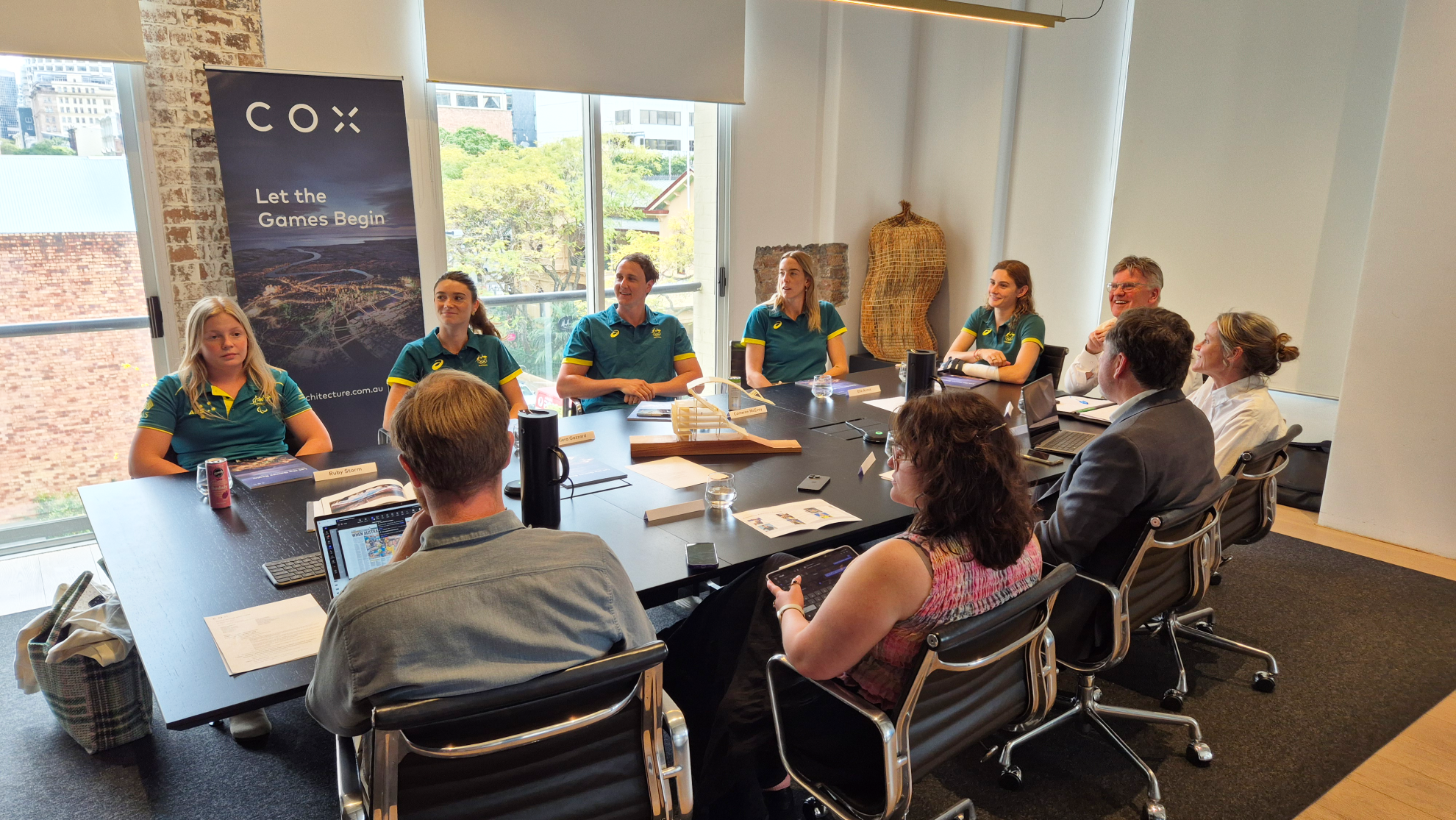
Australia’s connection to water runs deep. Swimming isn’t just our most popular sport – it’s part of our national identity. From swimming lessons and backyard pools to crystal-clear beaches and local creeks, water is woven into our daily lives. On the Olympic stage, aquatics is where Australia shines brightest, with Sydney 2000 etching unforgettable moments into our history – from Ian Thorpe and Susie O’Neill’s golden charge, to the men’s 100m freestyle relay team famously “smashing them like guitars” in front of a roaring home crowd.
COX is proud to be part of this story. Praised by IOC President Juan Samaranch as the “best Olympic Pool facility” he had ever seen, we designed the Sydney International Aquatic Centre (now Sydney Olympic Park Aquatic Centre). The venue went on to earn the International Olympic Committee Award for Sports Architecture and has remained one of the most iconic Olympic pools in the world.
As Brisbane prepares for 2032, designing a world-class aquatic centre is about more than medals – it must serve elite athletes, up-and-coming swimmers, and the wider community. To ensure these ambitions align with the lived experience of athletes, COX has been hosting a series of Athletes’ Advisory Group Forums, with the third forum bringing six aquatic Olympians and Paralympians into COX’s Brisbane Studio: Ariarne Titmus, Cameron McEvoy, Elle Armit, Kiera Gazzard, Maddison Keeney, and Ruby Storm.
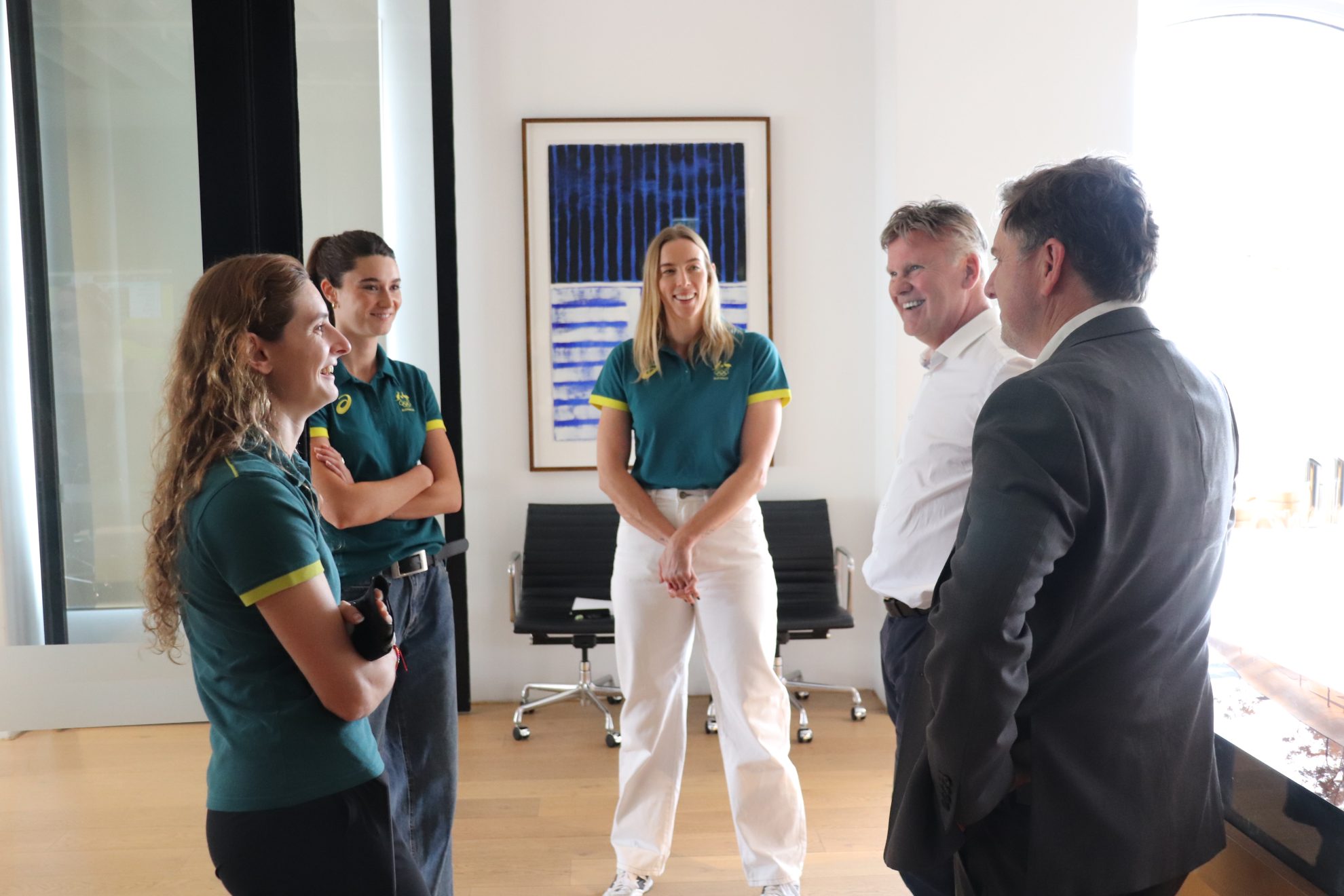
Their reflections, drawn from years of training and competing at the world’s highest level, provide invaluable insight into how venues can support performance and deliver memorable legacies.
“This is the first time in my entire professional career I’ve been able to have the privilege to come in and be asked properly about the efficiencies of high performance venues, and venue design,” said Cameron, highlighting the gap in involving athletes in design conversations from the start.
Transport and Proximity: Conserving Energy for Performance
Athletes noted that even minor transport inefficiencies can affect recovery, focus, and pre-race preparation – a reminder that travel, though invisible to spectators, can strongly influence performance.
“You could be up at 6:30 for a 10:00am heat… By the time you race, you’re not as fresh,” recalled Cameron. Ariarne added: “The buses stopped coming… we were left there for two and a half hours before getting picked up by a cab at 9:30pm before my 400 heat the next morning.” Ruby echoed their frustrations: “We were in the bus for an hour and a half because it got lost…”
Brisbane’s advantage is clear: the National Aquatic Centre will sit about a kilometre from the Athletes’ Village, allowing flexibility to walk, ride, or use shuttles. Getting this right will be central to making Brisbane 2032 the ‘Athletes’ Games’.
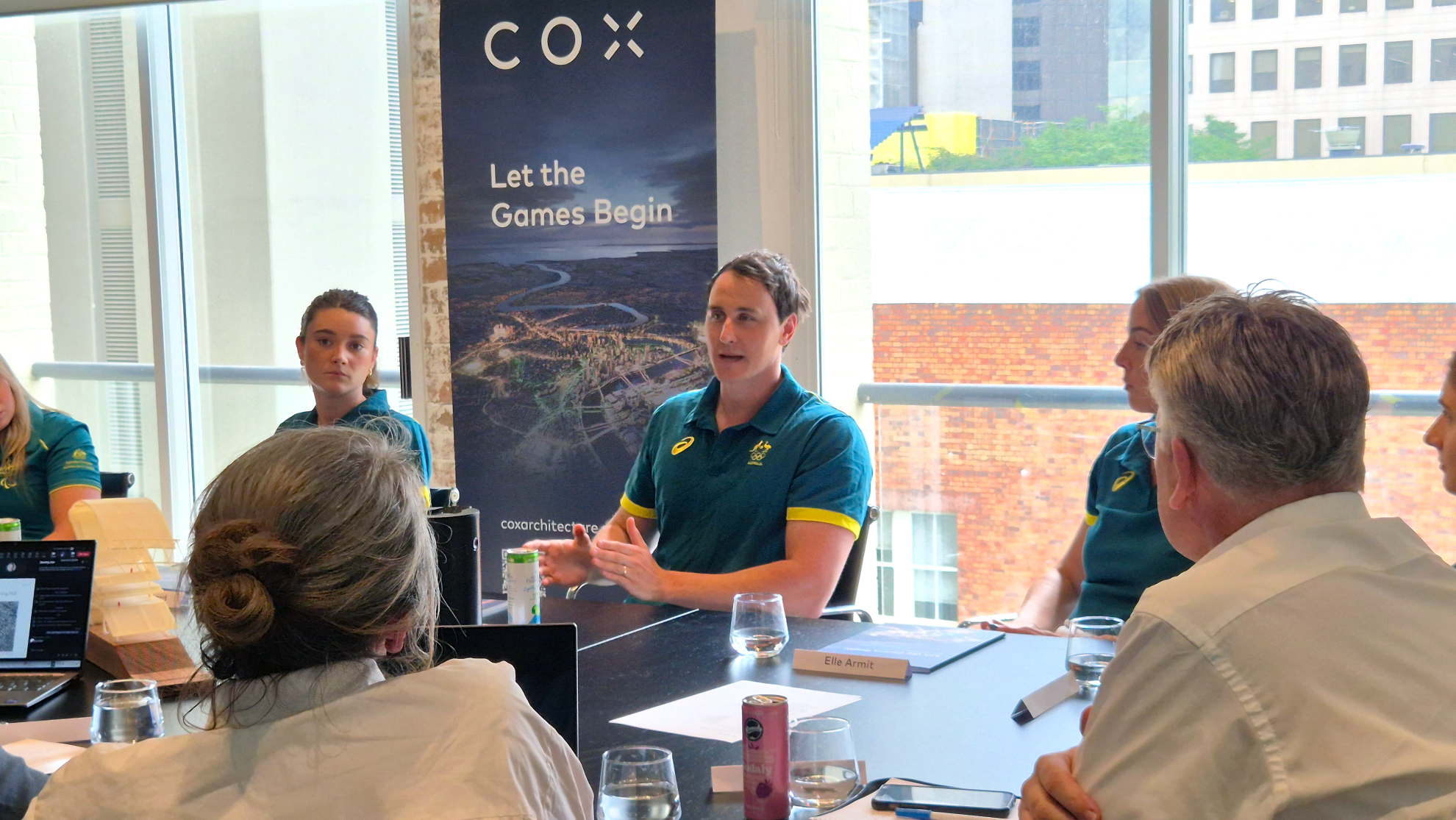
Warmup to Competition: A Seamless Flow
For all athletes, warmup is critical. Yet at many Games, venue congestion and limited space have sometimes disrupted optimal pre-race routines.
Cameron noted that “a lot of the time it’s chaotic in warmups… it’s literally like hand to foot for the whole way around.” For artistic swimmers, this lack of space can be particularly challenging: “People are being thrown in the air. Two teams could get next to each other and then they’re going into each other,” said Kiera.
Athletes agreed that seamless transitions between training, warmup, and competition areas are essential, and disruptions to this could force entire teams to seek alternatives. “Our team went to the UK for three or four days. We had our own pool there and then came back [to the Games] three days before,” explained Maddison.
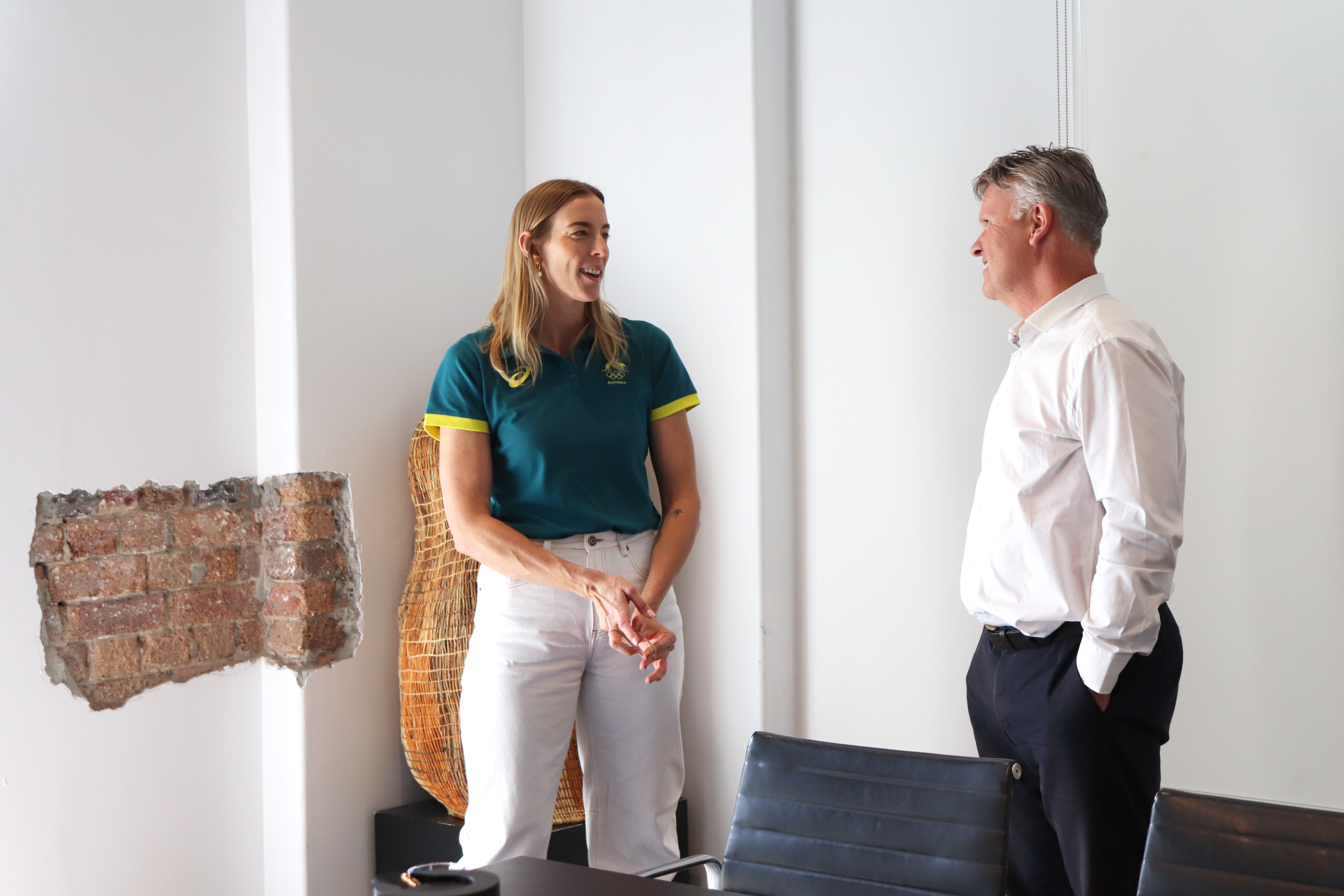
Change rooms were also discussed as an opportunity for improvement. “To fit 13 girls in the tiny room is not good,” said Elle. Maddison agreed: “Change rooms, toilets, bathrooms. It’s such a nightmare when you’re just waiting to get changed because everyone’s trying to get in the pool at the same time.” This also rang true for artistic swimmers: “There’s eight girls trying to do their hair and makeup, but the bathrooms were hard to get to and there were only two,” said Kiera. Their reflections underscored the importance of designing spaces that are accessible, comfortable, and well-equipped for both team and solo preparation.
By learning from these experiences and incorporating Universal Design principles, Brisbane can prioritise seamless flow and athlete comfort, ensuring transitions from training to competition are as smooth as the Games themselves.
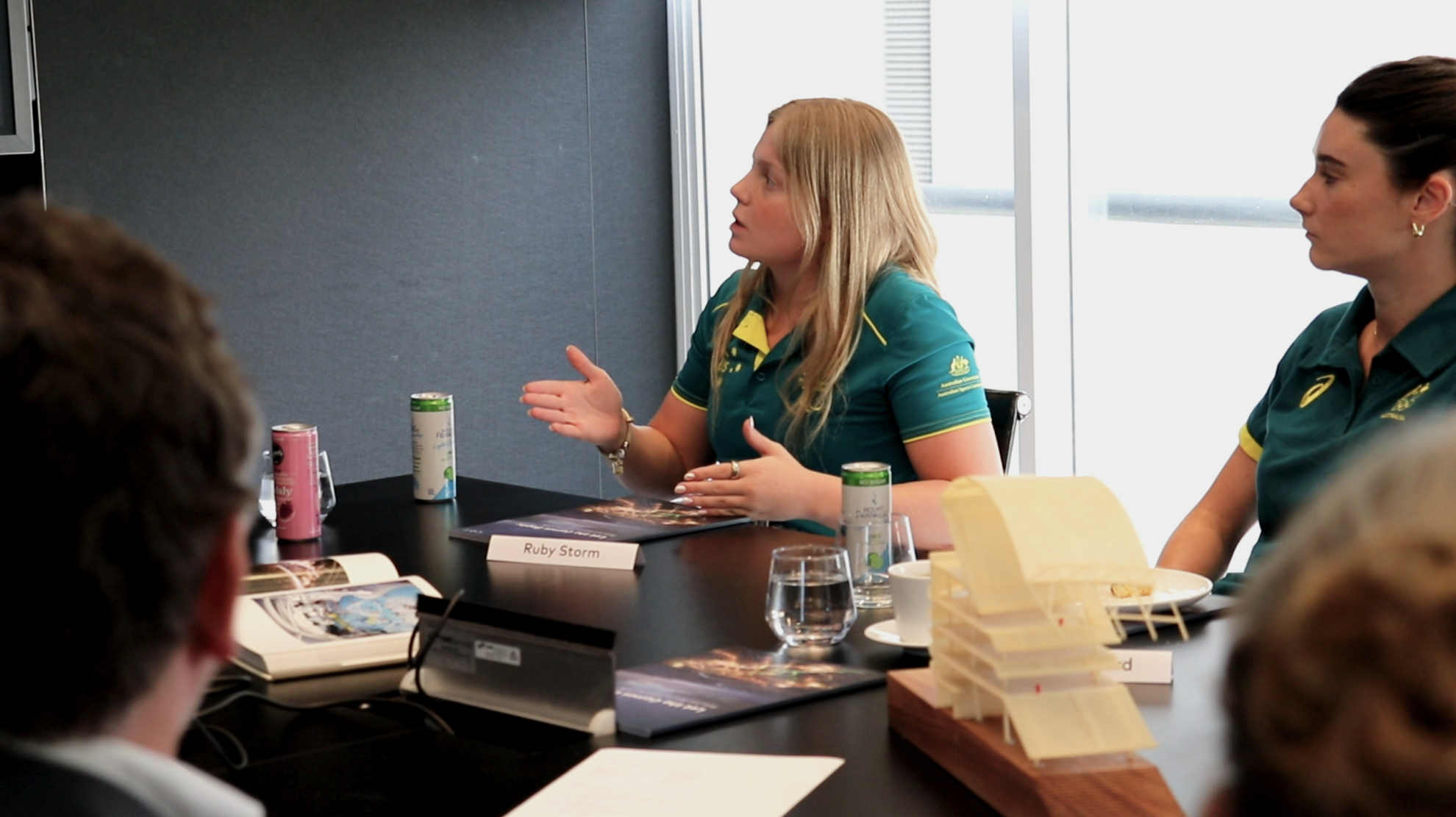
Environment and Atmosphere: Sound, Light, and Spectators
Performance is shaped not only by facilities, but by atmosphere. Athletes reflected on the sensory environment, from sound to light, and how small design decisions can have an impact.
For Kiera, sound bleed and TVs created mental hurdles: “When you’re in the warmup pool and hear your rival’s music… it really freaks you out… There’s TVs everywhere… the video is delayed; it really gets in your head.” Conversely, Ariarne found having TVs calming, showing that spaces must allow for diverse needs.
Call rooms and corridors carried weight as well. “A lot of the call rooms, the ceiling is quite low. It feels like you’re compressed… Some of the girls would get sick before competing because of anxiety. There wasn’t much ventilation,” Kiera recalled.
When design got it right, atmosphere lifted athletes. Both Ariarne and Cameron celebrated Paris’ spectator design: “It was incredible to be literally eye level,” said Cameron. These insights show that thoughtful attention to acoustics, lighting, and crowd proximity can elevate both athlete experience and spectator engagement.
Ariarne Titmus
Olympic Swimmer
(Tokyo 2020, Paris 2024)
[On Paris’ spectator design] You were having real life interactions with people… it gives you a little energy boost.
Pools and Performance: Depth and Design
At the heart of it all is the competition pool. Even subtle differences in depth, lane design, and sightlines can affect outcomes.
“It’s an Olympic Games and I think you have to get the depth of the pool right,” said Ariarne. Ruby agreed: “For me, the deeper it is, the better.” Cameron added: “If the bottom of the pool is closer than you’re used to, it definitely throws you off.”
Tokyo stood out as a benchmark: “Definitely my favourite pool… the pool was really deep… I felt so fast,” said Ariarne.
Equally important is what comes after the Games. Athletes consistently spoke about the need for flexibility – a pool that can serve both elite sport and community use. A venue that inspires but also belongs to the people.=
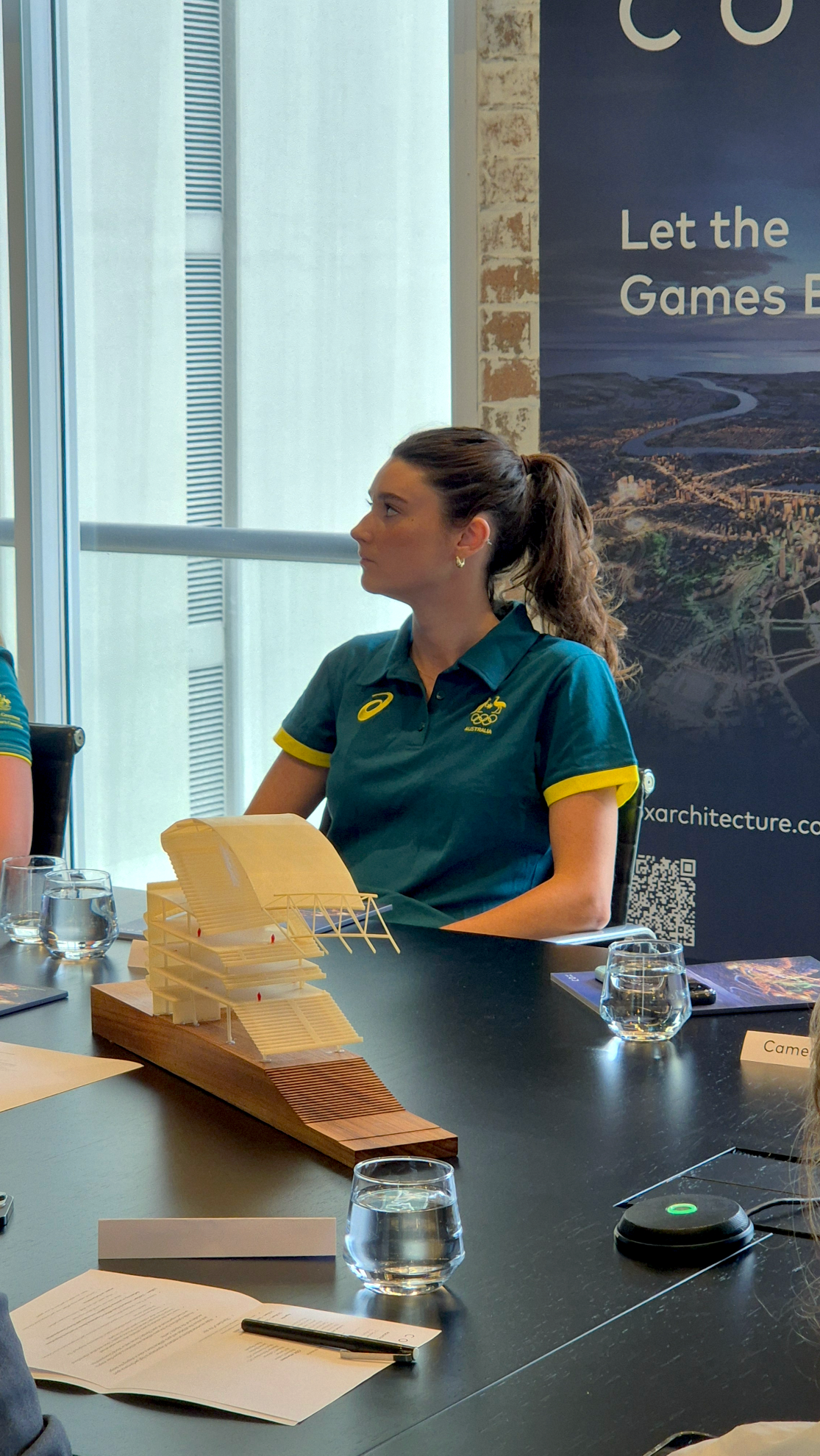
Legacy: Inspiring the Next Generation
For Ariarne, the opportunity Brisbane holds goes well beyond the competition pool:
“I just think that we are blessed for this incredible opportunity to build something from scratch in a city that’s growing. Aquatic sports play such a massive role in our country, and what an incredible chance to not only create a venue that will house the best athletes in the world in 2032, but also a complex where there’s the hope to have learn-to-swim and community swimmers through to national development programs, age group programs, and then hopefully all the way through to the best athletes in the country and the world – all being able to swim in the same place.
Inspiration is the biggest key to anything in life – I grew up watching the Olympic Games and it inspired me to swim. To have a stadium where kids can watch, aspire, and start their journey to the top squad is an incredible opportunity, and I hope we can really capitalise on it. During the Olympics and Paralympics, Brisbane will just glow.”
Kiera also spoke about the long-term impact:
Kiera Gazzard
Olympic Artistic Swimmer
(Tokyo 2020, Paris 2024)
Making it a memorable event is so important… so that 20 years later athletes can say, ‘I competed at that amazing pool in Brisbane.’ For international visitors, having a typology that resonates with Australian culture and our connection to water would be really special.
Brisbane 2032 offers a once-in-a-generation opportunity. By listening to athletes and designing with both performance and community in mind, we have the chance to create an aquatic centre that honours Australia’s past, serves the present, and inspires the future.
A sincere thank you to all the athletes who have joined us in these forums, and to the Australian Olympic Committee, Australian Athletics, and Paralympics Australia for supporting this initiative.